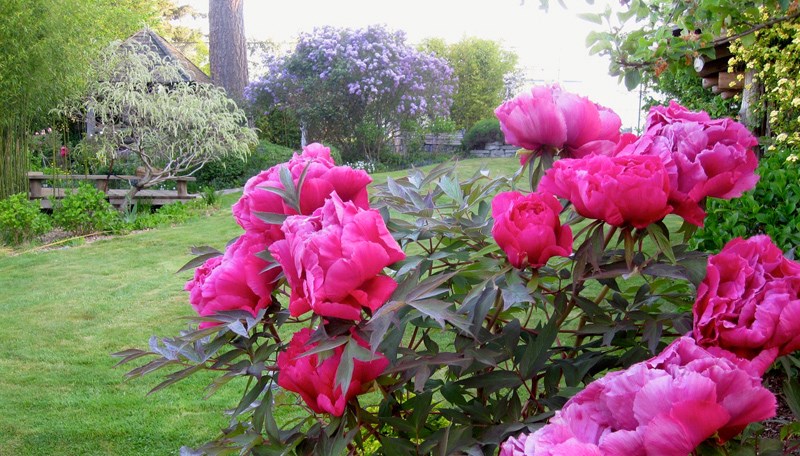There are certain flowers that in some indefinable way have a special hold on my emotions. They are all plants from another era, still found in gardens today, but often superseded by newer varieties, and forgotten in contemporary landscapes. Among them are peonies, lilac, hollyhock, violets, bleeding heart, lady slipper, Jack in the pulpit, forsythia, tulip and iris. I call them “Grandmother Plants.”
These plants touch some atavistic memory that defies logic and reason. They are the touchstones of my heart; they make me feel better each time I see them.
There are many plants that I love, admire and enjoy, but they don’t inspire the same personal emotional connection as my Grandmother Plants.
These particular plants may not have been a part of my experience in my own grandmother’s garden. It was only in the summer that we visited—long past the bloom time of many of these special plants—but they all personify that sense of permanence, security and the subtle touch of fantasy that are the trademark of established gardens, and mirror my deep bond with my grandmother.
Throughout my growing up years I would see them in gardens as I walked by, and my eye would immediately gravitate to these select plants. Not for me the roses and lilies of exotic beauty; my heart had long since been lost to these particular blooms which are so often found in the mature gardens of older people. Grandmothers.
Scent is a profound memory binder. My grandmother wore an old-fashioned scent called April Violets. It was distinctive, and her own personal identifier. To this day I find violets and their scent irresistible, and hope to always have some in my garden for their transitory but singular pleasure.
Memory takes me back to my childhood, where those first connections were forged. Living for a couple of years on an orchard in an eastern rural community was utopia for a seven-year-old. The orchard bordered a wooded space where mysterious and dangerous things existed. My sisters and I freely ranged the orchard and neighbouring farm, encountering patches of wild strawberries and violets, but we were forbidden to explore the nearby forest due to poisonous snakes, poison ivy, and the dark secluded nature of the woods. Occasionally, we were taken there on memorable excursions by our mother to see the trillium, Jack in the pulpits and lady slippers that seemed exotic in that shaded grove. Their secret inner vessels made them even more fascinating and their colours glowed in the shadows.
An old neglected forsythia bloomed early in the overgrown yard, heralding spring’s arrival. Tasting minute sips of nectar from inside each golden blossom was a childhood communion celebrating the advent of spring.
We all have some singular plant, or several, that resonates with us. Bound with them are our ties to memory or emotion that connect us to significant times or people in our lives. We take these touchstones, these Grandmother Plants, and incorporate them into our gardens, keeping them close to us.
Our children and grandchildren may pass by these plants and possibly miss the significance they hold for ourselves while they are each busy discovering their own place in the world around them. Their touchstones will be uniquely their own, containing their personal connection to the earth and the things that come from it.
These young people may not even be aware of the invisible bonds they are forming until years later, when they find themselves inexplicably drawn to a section of a garden, or an aisle in the nursery, or down a forest path. And there they will be, feeling a secret sense that all is well with the world without knowing why.
Lin Morrison is a member of Powell River Garden Club.



